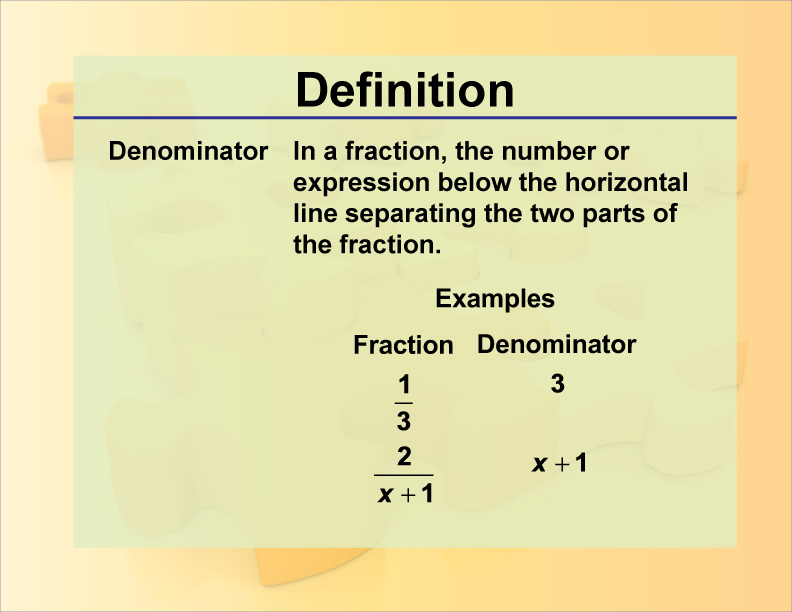
Display Title
Definition--Denominator
Display Title
Definition of Denominator

Topic
Fractions
Definition
The denominator is the bottom number in a fraction that indicates how many equal parts the whole is divided into.
Description
The term *denominator* is fundamental in the study of fractions. It represents the total number of equal parts into which a whole is divided. For instance, in the fraction 34 the denominator is 4, which means the whole is divided into four equal parts. The numerator, which is 3 in this case, indicates how many of those parts are being considered.
Understanding the denominator is crucial for performing operations with fractions, such as addition, subtraction, multiplication, and division. When adding or subtracting fractions, the denominators must be the same, which often involves finding a common denominator. In multiplication, the denominators are multiplied together, and in division, the concept of the reciprocal of the denominator becomes important.
The denominator also plays a significant role in understanding the size of fractions. A larger denominator means the parts are smaller, while a smaller denominator indicates larger parts. This understanding helps in comparing the sizes of different fractions and in converting between improper fractions and mixed numbers.
For a complete collection of terms related to fractions click on this link: Fractions Collection.
| Common Core Standards | CCSS.MATH.CONTENT.3.NF.A.3.D |
|---|---|
| Grade Range | 6 - 12 |
| Curriculum Nodes |
Arithmetic • Fractions • Fractions and Mixed Numbers • Identify and Name Fractions |
| Copyright Year | 2014 |
| Keywords | definition, denominator |